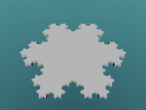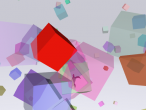Revised Lesson Outline - 28/1/11
|
Session
|
Focus
|
Details
|
Questions
|
|
1. Intro
|
Prior Knowledge of 2D, 3D
|
-
Introduce yourself and research aim and what is expected of the chn each session. Learn their names.
-
Ask questions about 2D shapes and 3D objects – have 2D picture cards and 3D blocks.
|
-
What do you think about maths? Have you learnt about 2D shapes and 3D objects before? What do you know?
-
What is the name of this shape/ object?
-
How do you know it’s --? What makes it a --?
-
What are these called?[point to vertices/ faces/ edges]
-
How many vertices/ faces/ edges does this object have?
|
|
2. Intro
|
Become familiar with VRMath2.0
|
-
Introduce the chn to VRMath2.0
-
Navigate through the space (fly, walk, examine)
-
Move turtle using basic commands
|
-
Can you get the turtle to turn and face you? How many turns did it take? Can you change the turning angle to make it turn to you in only one turn? Can you move the turtle further away? Can you bring him closer? Go left/right/up/down?
|
|
3. 2D
|
Polygons
|
-
Discuss squares
-
Draw a square on paper
-
Draw in VRMath2.0
-
Discuss squares again
-
If time, have a go at drawing a triangle.
|
-
What do you know about squares?
-
Can you draw one on paper?
-
Can you draw one in VRMath2.0?
-
How did you draw the square?
-
Was there a difference in trying to draw a square on the computer than on paper?
-
What made it easier/harder in VRMath2.0?
-
What can you tell me about squares now?
|
|
4. 3D
|
Polyhedra
|
-
Discuss cubes
-
Make a cube
-
Draw a cube on paper
-
Draw a cube in VRMath2.0 (no bearings – egocentric)
-
Discuss cubes
|
-
What do you know about cubes?
-
Can you make one out of ---- plastic pieces?
-
Could you draw a cube on paper?
-
Can you draw one in VRMath2.0?
-
How did you draw the cube?
-
What did you need to think about?
-
What can you tell me about cubes now?
|
|
5.
|
|
-
Introduce bearings
-
Prior knowledge of NESW
|
|
|
6.
|
|
-
Draw a cube in VRMath2.0 with bearings available.
|
-
Can you draw a cube a different way?
-
Did you notice a difference in how you drew it?
-
In what way was it harder or easier?
|
Ideas about lesson plans
Orientation lesson plan
2D shapes?
3D shapes?
What is the developmental sequence of language and thinking during the construction of polygons and poyhedra in a 3D virtual environment?
|
Lesson
|
Focus
|
Details
|
|
1. Intro
|
Prior Knowledge of 2D, 3D and spatial ability/
|
-
Recognise/name 2D and 3D shapes
-
Translation of orthogonal view to make with blocks
-
Translation of a side projection view to an orthogonal one (draw front, side & top view of an object)
|
|
2. Intro
|
Become familiar with
VRMath
|
-
Navigate through the space (fly, walk, examine)
-
Move turtle using basic commands (Turtle dance?) Use repeat function
|
|
3. 2D real
|
Polygons
|
-
Physically pace out shapes (Triangle, square, pentagon, hexagon) and discuss commands.
-
Draw shapes on paper – estimate angles (right, acute, obtuse).
|
|
4. 2D virtual
|
Polygons
|
-
Create polygons in VRMath
-
Create a generalisation table
|
|
5. 2D-3D real
|
Nets
|
-
Identification / construction of prisms/ pyramids/ cylinder
|
|
6. 3D real / virtual
|
Recognition of 3D shapes properties
|
-
Count number of vertices, edges, faces
-
Comparison of visualising from 2D image or in 3D in VRMath
|
|
7. 3D real
|
Polyhedra
|
|
|
8.
|
|
|
|
9.
|
|
|
|
10.
|
|
|
























